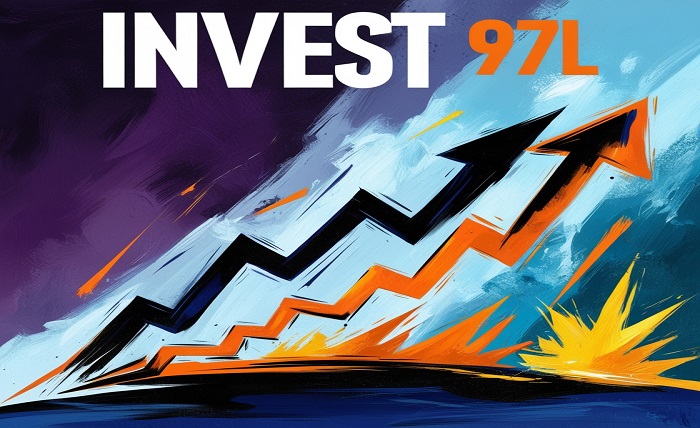It can be difficult to locate the best investment opportunities in the ever-changing world of finance, especially when looking at new or emerging areas. One such possible investment choice that has been gaining popularity among financial analysts and seasoned investors is “invest 97l.” Although some people may not be familiar with this term, knowing it could lead to a number of financial advantages. In this blog post, we’ll examine what “invest 97l” is, its possible benefits, and its connected hazards. We will also explain the sectors involved, how to assess this investment, and whether it would fit into your investment portfolio.
What is 97L?
First, it’s important to define what “invest 97l” actually means. “invest 97l” frequently refers to distinct investment vehicles, methods, or possibilities in the finance arena, especially in niche markets or within particular sectors. Although some may initially believe that this has to do with a tax law or government policy, in this instance, it may also have to do with a certain asset or investing approach that is well-liked in particular markets.
Understanding the Structure of 97L Investment
Real assets, new market trends, or venture investments in cutting-edge industries or technologies are the foundations of several investment strategies that fit under the “invest 97l” category. This implies that investors frequently need to comprehend both the short-term volatility that could affect the success of 97L investments as well as the long-term sustainability of the sectors in issue.
The Industries Involved with 97L
Determining which sectors are directly influenced or related with invest 97l is a crucial part of investing in this type of venture. 97L typically intersects with high-growth industries like:
Technology: Thanks to ongoing innovation, the tech industry continues to be the one with the fastest growth.
Healthcare: Investments here have the potential to yield significant returns, especially in the biotech and pharmaceutical sectors.
Energy: Sustainable solutions and renewable energy are becoming more and more popular.
Blockchain and Cryptocurrency: Institutional and individual investors are becoming interested in digital assets.
Green tech and sustainability: Businesses that provide eco-friendly solutions are becoming more and more popular.
Risk vs Reward: Evaluating the Investment
Knowing the possible dangers and benefits of invest 97l is essential, just as with any investment. Because of the connected industries’ rapid expansion, the rewards may appear enormous, but the risks might also be significant.
When considering 97L investments, the following are the primary risks to take into account:
Market volatility: A lot of the industries connected to invest 97l are prone to abrupt changes in the market.
Regulatory risk: Unexpected laws or actions by the government could impede the growth of the sectors involved.
Technology failure: Since a large number of businesses in the 97L sector depend on state-of-the-art technology, there is always a chance that these technologies won’t live up to their full potential.
How to Invest in 97L: Practical Steps
invest 97l requires a methodical approach. to start, you have to take the subsequent moves:
Research: To comprehend market trends and growth projections, conduct in-depth research on the sectors and particular businesses connected to 97L.
Select the Correct Vehicle: Regardless of whether you’re investing in stocks, mutual funds, exchange-traded funds, or private equity, make sure the investment vehicle you choose supports your objectives.
Speak with a financial counselor: To make sure you comprehend the complexity of specialized investments like 97L, it’s always advisable to speak with a financial expert.
Track Changes in the Market: Pay careful attention to industry trends, technology developments, and market conditions.
Diversify Your Portfolio: It’s a good idea to distribute risk across a variety of asset classes because 97L may entail high-risk industries.
Common Investment Mistakes to Avoid with 97L
It’s crucial to stay clear of a few typical traps when thinking about an invest 97l that could compromise your returns:
Overconfidence in Emerging Trends: Without conducting the required investigation, many investors get into industries based on hype.
Ignoring Risk Management: 97L has hazards that could impact your investment even though it may yield large profits. Effective risk management techniques are crucial.
Focusing Only on Short-Term Gains: Investors may lose out on the larger picture while making 97L investments if they disregard the long-term possibilities for short-term outcomes.
Ignoring Diversification: It can be risky to allocate all of your money to one market or asset class, especially in industries with high levels of volatility.
Conclusion
For investors hoping to profit from rapidly expanding industries with substantial upside potential, invest 97l offers an attractive prospect. Like any investment, though, it necessitates a well-defined plan and rigorous evaluation of the risks and rewards. You can increase your chances of success by investigating industry, speaking with professionals, and diversifying your holdings. Even though 97L might be a specialized investment opportunity, if you approach it with the appropriate information and comprehension, it might be a useful addition to your investment strategy.
FAQ
What does 97L mean in terms of investment?
In emerging markets, invest 97l refers to particular investment techniques, legal provisions, or industries, frequently associated with high-growth areas such as technology, healthcare, or energy.
Is it risky to invest in 97L?
Indeed, because invest 97l in developing or unstable industries, there may be a substantial risk involved. before making an funding, careful studies is crucial. Find out more information: invest 97l
Is it possible to make money on 97L investments?
Indeed, even if they are riskier, investments in 97L-related sectors have the potential to yield sizable profits, particularly if you choose to fund sectors with robust growth prospects.

